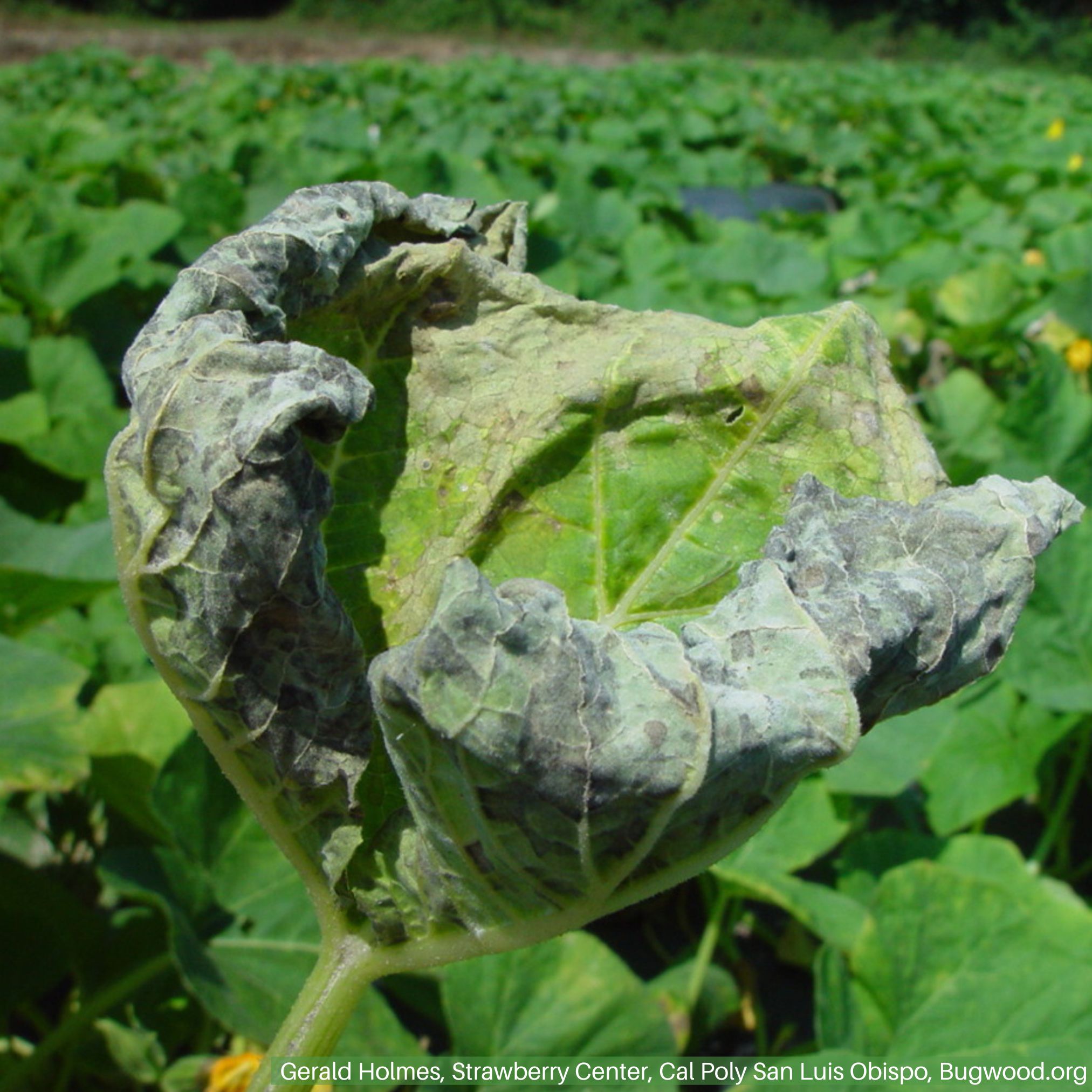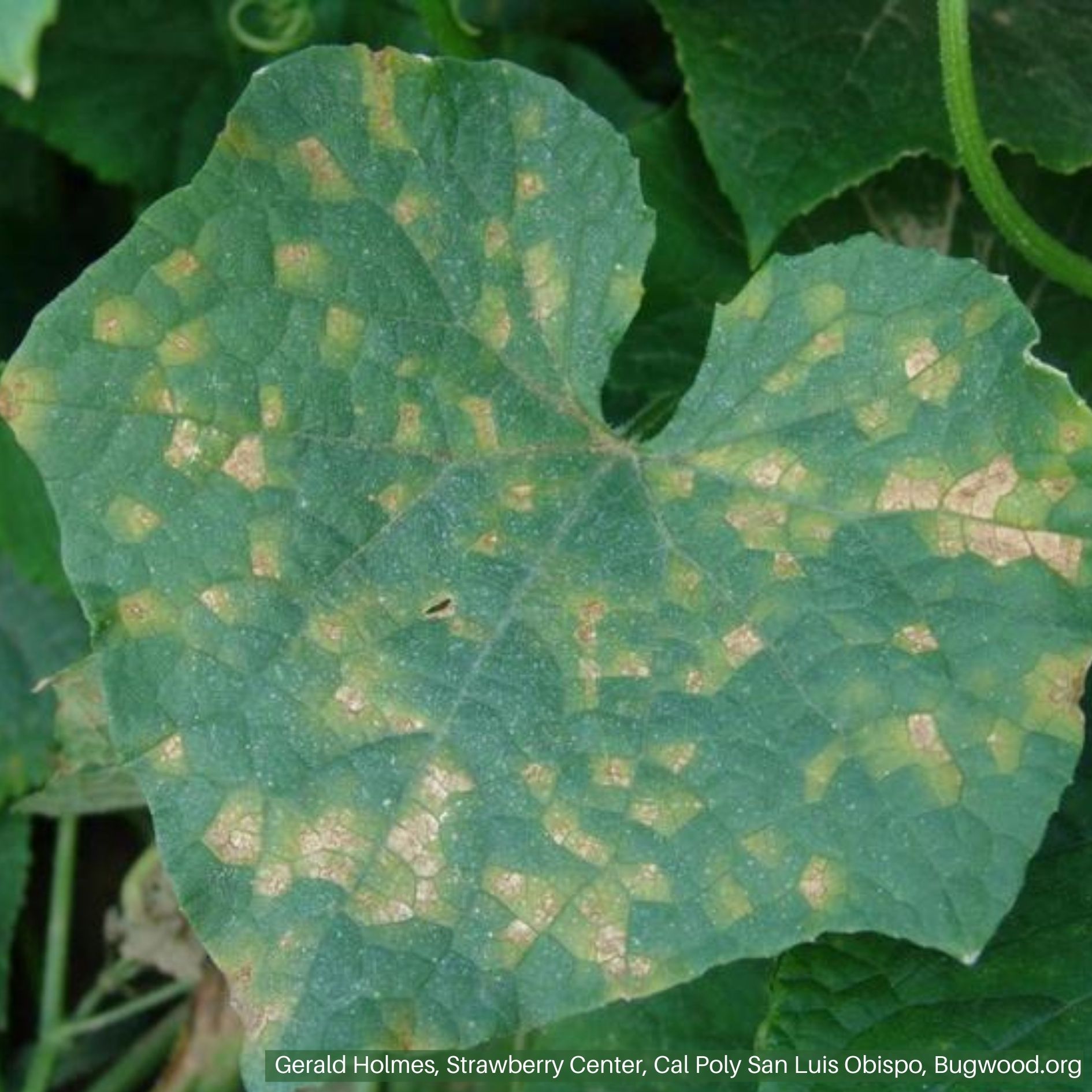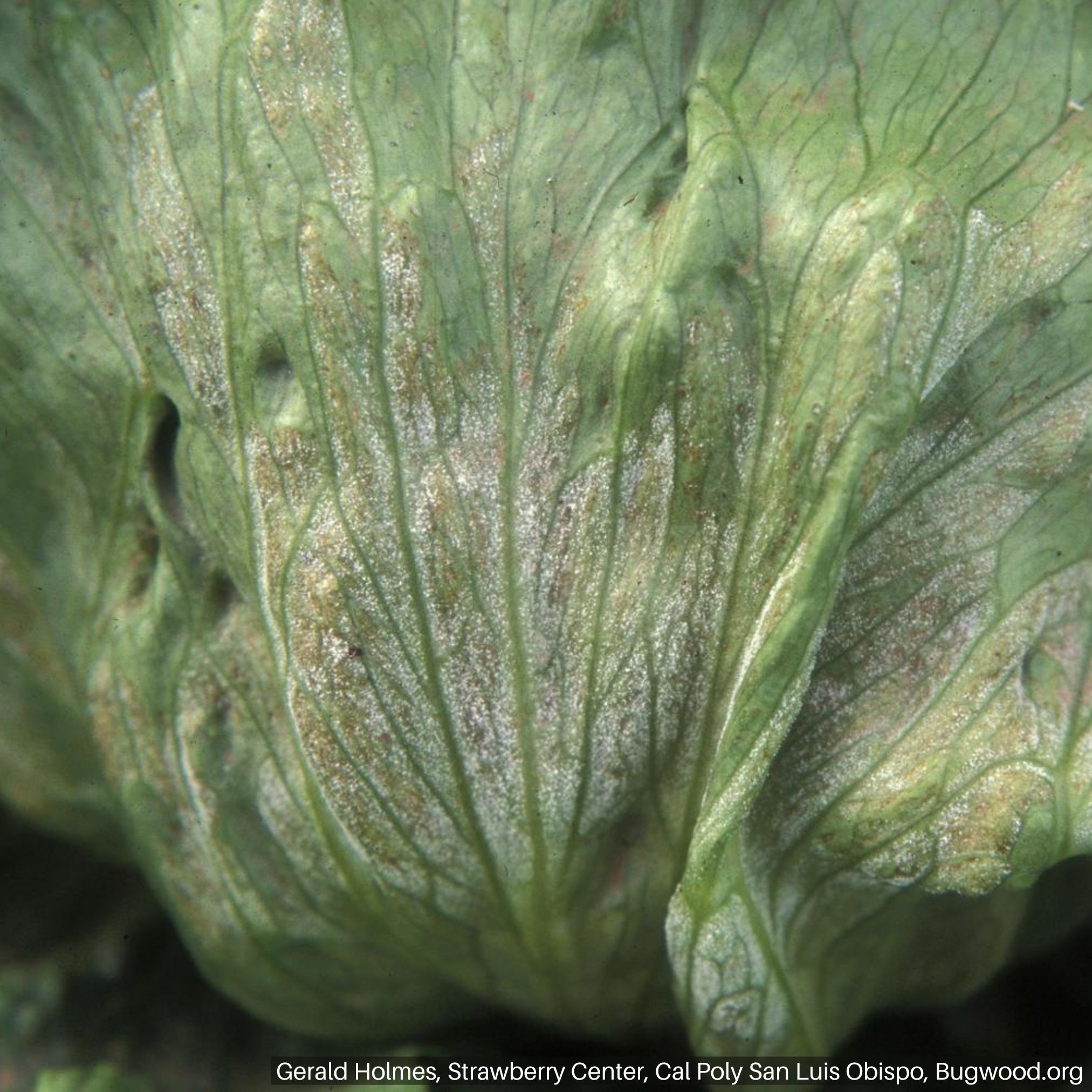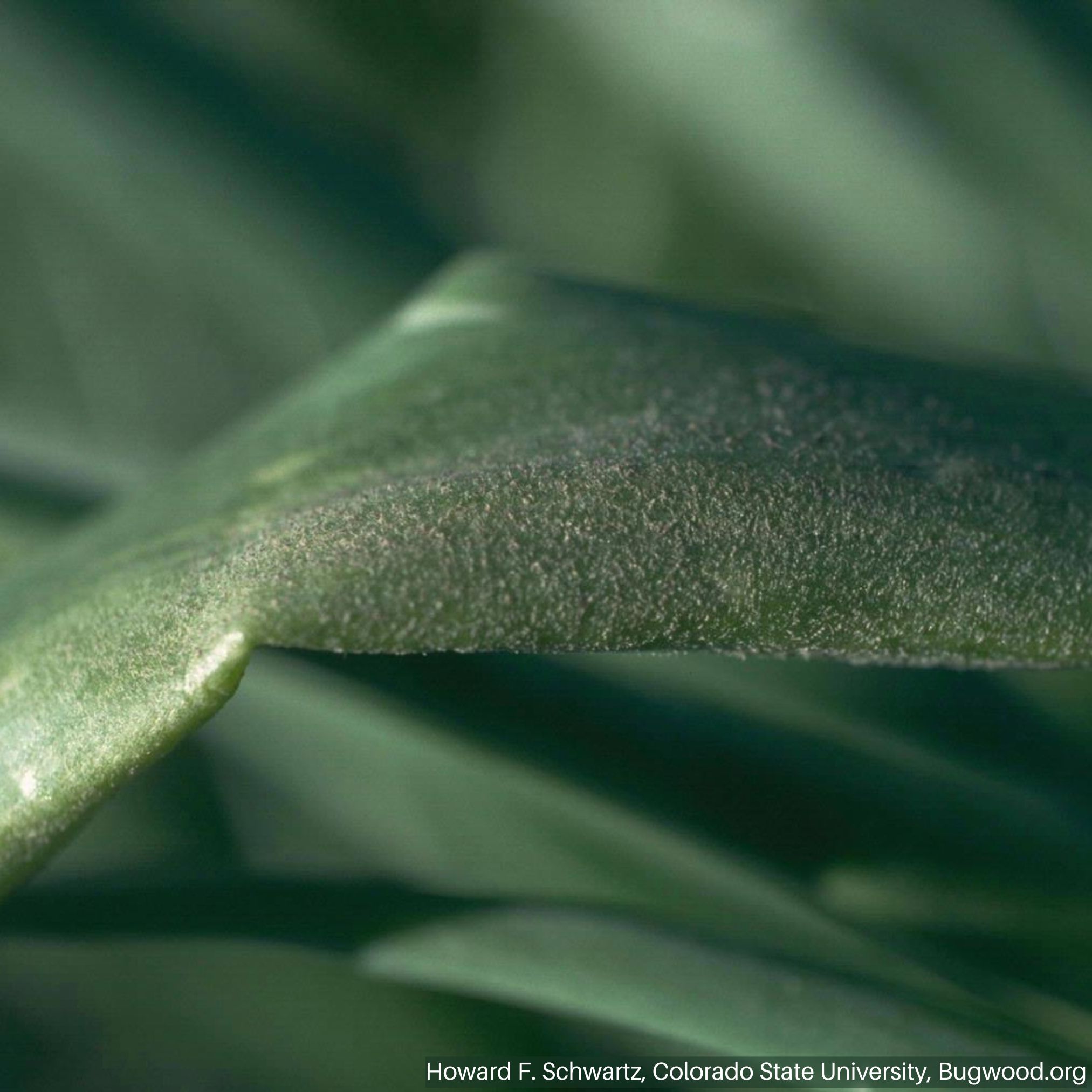Downy Mildew
 Downy Mildew on Squash Leaf
Downy Mildew on Squash Leaf Angular yellow spots on top of cucurbit leaf.
Angular yellow spots on top of cucurbit leaf. Downy Mildew on Lettuce
Downy Mildew on Lettuce Onion with Downy Mildew
Onion with Downy MildewHOSTS
- Alfalfa
- Cucurbits
- Leafy Greens
- Onions
- Ornamentals
- Weeds
DESCRIPTION
Downy mildew is caused by water mold, which are microorganisms similar to fungi. Downy mildew species have specific host ranges. These different species may also require different treatments than other types of downy mildew.
BIOLOGY
Downy mildew thrives in cool, wet environments making infection most common in the springtime. Some downy mildews can overwinter in infected plants, in the soil, or in plant debris. Other species cannot survive cold weather and spores are carried by the wind from warmer areas in the spring.
When a downy mildew spore reaches a suitable host, it will create a germ tube that pierces the host leaf to live off the plant’s water supply. The germ tube will also allow the germination of new spores created by the sporangia. The spores will be blown by the wind to new host plants.
SYMPTOMS
- Fuzzy growth (sporangia) on the underside of leaves, usually gray or grayish-blue.
- Angular yellow or brown spots on the top of the leaves.
- Foliar die-back.
- Distorted stem or leaf growth.
GENERAL MANAGEMENT
- Remove and dispose of plant debris.
- Use watering methods that minimize moisture on plant foliage, especially during cool weather.

